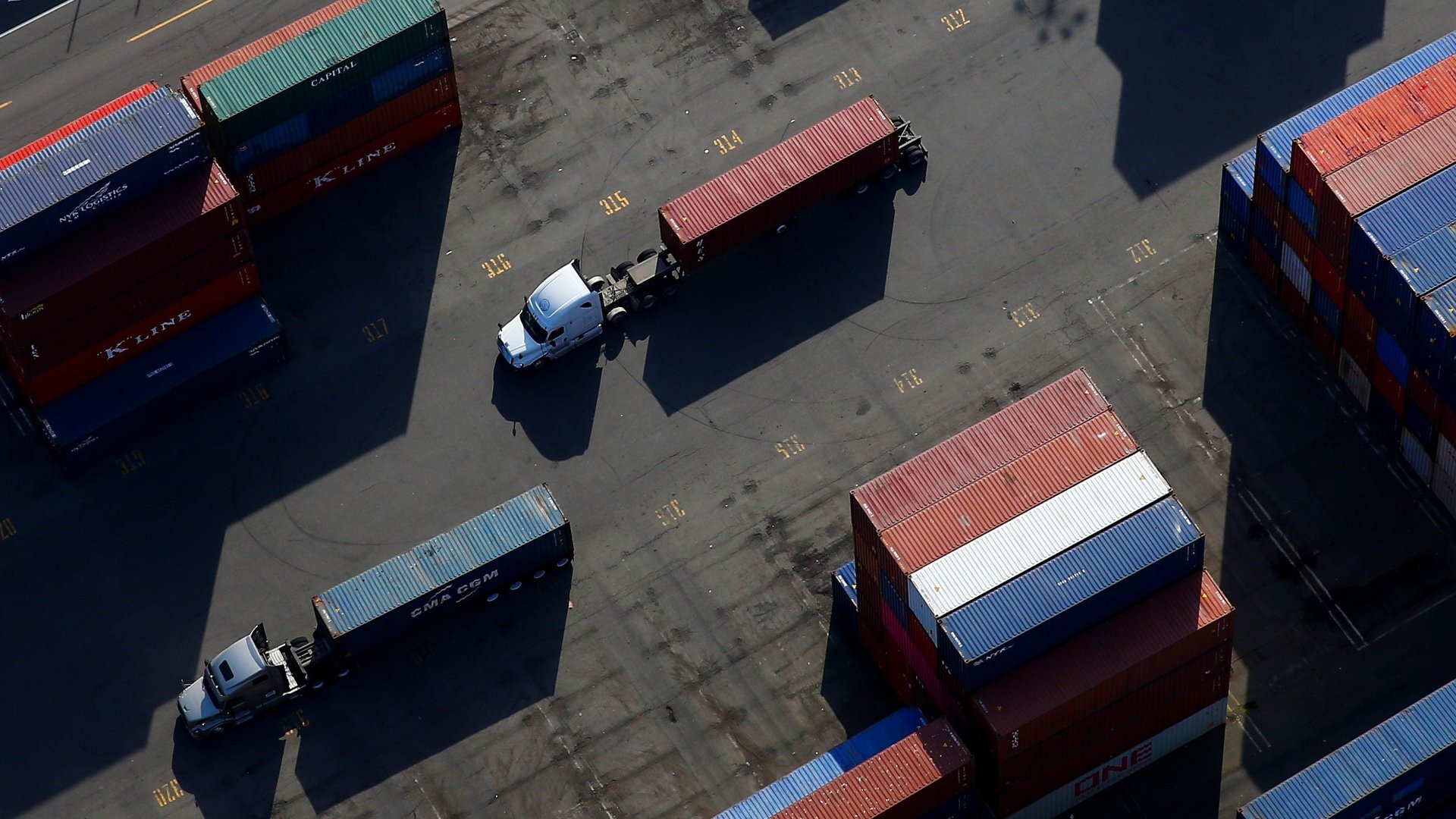Unloading container ships faster in the US is pushing supply chain woes onto trucks
Last week, the Biden administration announced that the Port of Los Angeles, the country’s busiest container port, will operate on a 24/7 schedule to clear the backlog of ships jammed in the San Pedro Bay. The move is meant to loosen chokepoints as the US’s beleaguered supply chain limps toward the Christmas season.


Last week, the Biden administration announced that the Port of Los Angeles, the country’s busiest container port, will operate on a 24/7 schedule to clear the backlog of ships jammed in the San Pedro Bay. The move is meant to loosen chokepoints as the US’s beleaguered supply chain limps toward the Christmas season.
The reaction in the industry has been tempered, seeing the move as a welcome first step but unlikely to be transformative. The CEO of one trade group characterized the announcement to CNN as “low-hanging fruit” and a “relatively obvious next step,” but one that would not solve the related problem of driver and equipment shortages in trucking.
The Port of LA won’t be the first in the US to operate a 24-hour schedule and they don’t have to look far for cautionary tales. Savannah’s 24-hour port has some 80,000 containers piling up at its docks, and the Port of Long Beach, right next to the Port of LA, switched to a 24/7 schedule in September. While longshore workers were willing to work a third shift, operating the cranes to pull containers off ships at a faster rate, the Wall Street Journal found that two weeks after the change, no additional truck drivers showed up to move the containers out of the docks.
Drayage trucking is the next link on the supply chain after containers are pulled off a ship, and refers to the short distances the vehicles travel. Pressure on the supply chain is straining the equipment, and drivers are contending with shortages of tires and chassis, the wheeled metal frames that carry containers from the dockyard to railheads or distribution warehouses for their journeys inland.
The roads the trucks drive on are crumbling—one freight forwarder said they lose half a dozen chassis a week to the deep potholes outside the ports. According to the Pool of Pools, which aggregates information from the marine chassis operators of the Ports of Long Beach and Los Angeles, of the port’s 58,000 chassis, 2,158 (pdf) are currently broken, and the specialized mechanics who fix them are likewise in short supply.
Meanwhile, the strains on the supply chain have made a grueling job, in which recruiting and retention have long been a problem, even less attractive. In an opinion piece for Transport Dive, an industry outlet, Nimesh Modi, CEO of BookYourCargo, a drayage service provider, described the shifts of short-haul truck drivers that start at 3am with hours spent in a wearying miles-long stop-start line at the port to pick up containers. Once they’re loaded, they go out into the roads to inch through LA’s notorious traffic, unload at a warehouse or railhead, and turn around to do it all over again.
Add a few dozen frenzied calls from shippers demanding to know where their goods are and why they’re late—chassis are spending up to 9 days in street dwell, up from about 3 days pre-pandemic—and it’s no surprise that truck drivers are also part of the great resignation.
The Biden administration acknowledges that increasing port operations alone isn’t a panacea, and officials hope to smooth the pipeline for hiring new drivers by making it easier to apply for commercial driver’s licenses. They point out that each month in 2021, an average of 50,000 commercial licenses and permits have been issued, a 60% increase from the previous year.
Despite the Biden’s administration’s efforts, supply chain issues are far from over. An analysis of earnings call transcripts by Bloomberg found that use of the phrase “supply chain” has exploded, to a record high of about 3,000 so far this year, up from a low of about 470 in 2008. With shortages piling up, it’s safe to assume it’s not because executives have anything upbeat to say about them.